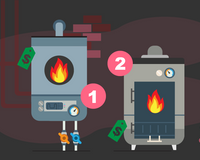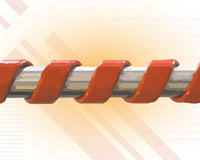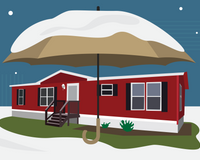The foundation is a vulnerable spot in any mobile home. Because mobile homes are mass-manufactured, they aren’t built directly onto a plot of land. This leaves their foundations exposed to moisture, invasive insects and animals, dirt, and drafts. The only thing standing between your mobile home and these unwelcome guests is the underbelly.
What is an Underbelly?
A mobile home underbelly, also known as a belly board or bottom board, is a protective layer attached to the bottom of a mobile home. It acts as a floor insulator, protects the underside of the house from moisture and pests, and covers up electrical wires and pipes.
Mobile Home Underbelly Materials
A mobile home’s bottom board can be made of a variety of materials. The most common material is polyethylene sheeting, a flexible polymer-based material. However, you can also use cloth or heavy tar paper. While these materials are less durable, they are cheap and fairly easy to install. Aluminum underbellies exist, but while they’re more durable than cloth, paper, or polyethylene, they’re more expensive and prone to scratches.
An underbelly should also have a layer of insulation between the outermost layer and the mobile home’s subfloor. The best insulation for your mobile home’s underbelly will depend on your climate and budget, but fiberglass insulation is a popular choice. There are also spray foam insulators.
Installing/Replacing the Bottom Board
Even the best-made bottom boards don’t last forever. Replacing or repairing your mobile home bottom board can be difficult due to its location, but it’s necessary to keep your home properly protected. Here’s how to install a new bottom board or replace an existing one:
1. Remove Damaged Material if Necessary
Before you can install a new bottom board, you have to get rid of the old one. In most cases, this means carefully cutting away old belly board and insulation materials. Once you’re done, you’ll be left with the chassis, floor joists, plumbing, and subfloor.
Note: If your belly board is mostly intact, but has small holes or tears, it’s possible to fix it without fully replacing it. Simply cover up the holes with belly board repair tape.
2. Replace or Reseal Ductwork
Next, you’ll need to reseal or replace the ductwork under your home. Unsealed ducts allow moisture and dust into your heating system and allow temperature-controlled air to escape, which can drive up your energy bill. You’ll either need to reseal the ducts or replace them entirely.
3. Install New Insulation
In order to keep your floor properly insulated, you’ll need a layer of insulation beneath the belly board. This can be fiberglass, spray foam, or foam boards.
4. Install New Board
Finally, cover up the insulation with the new belly board material. Make sure to fasten it securely to your home’s frame using nails or screws, and to seal it with caulk or sealing foam in order to keep out moisture.
Quality Mobile Home Supplies at Star Mobile Home Supplies
A well-sealed underbelly is a vital part of any mobile home. If you’re looking for underbelly materials or repair supplies, shop at Star Mobile Home Supplies. We offer high-quality underbelly sheeting, as well as underbelly repair materials. Contact Star Mobile Home Supplies today and get what you need to keep your mobile home in prime condition.






